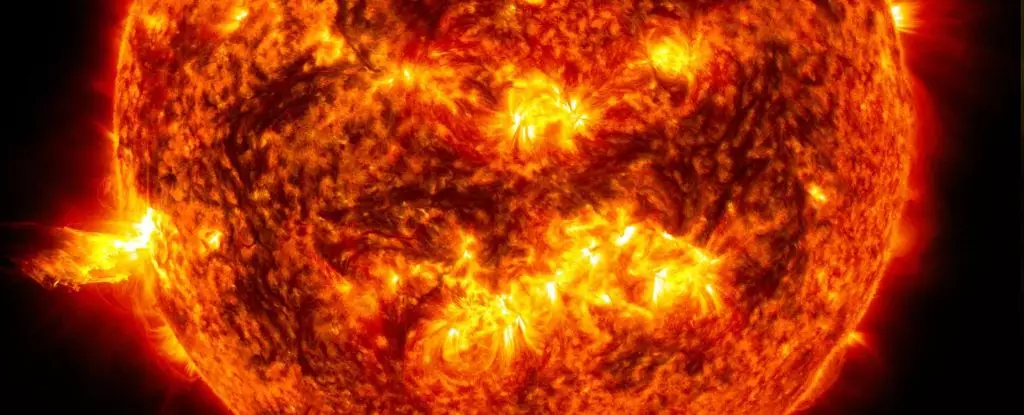For centuries, humanity has viewed the Sun as a model of constancy—a dependable force upon which our calendars, agriculture, and civilizations have relied. Yet, modern scientific inquiry has repeatedly shown that this luminous celestial body is anything but predictable. For decades, predictions about solar activity were rooted in the notion of a relatively steady rhythm governed by the well-known 11-year solar cycle. These forecasts suggested that the Sun would remain subdued, mirroring the relatively quiet Solar Cycle 24, which commenced in 2008 as one of the weakest in recent history.
However, recent observations disrupt this narrative, revealing a dramatic and unexpected shift. The Sun, it appears, is waking up from its slumber at an alarming rate. The earlier scientific consensus now seems naive in light of new data indicating that solar activity has been gradually intensifying since 2008, defying long-held expectations. This realization forces us to confront an uncomfortable truth: our understanding of our star is far more limited than we like to admit. The apparent steadiness we perceive day to day is an illusion; beneath that calm surface lies a restless, unpredictable engine capable of surprising even the most seasoned solar physicists.
The Unpredictability of Solar Cycles: Nature’s Complex Dance
The solar cycle, characterized by rising and falling sunspot numbers, has long served as a primary tool for understanding solar activity. Every 11 years, the Sun transitions from solar minimum—a period of relative quiet—to solar maximum, marked by an surge in sunspots, flares, and energetic eruptions. But beneath this rhythmic pattern lies a complex web of processes that scientists are only beginning to unravel. Historical episodes such as the Maunder Minimum and the Dalton Minimum—periods of drastically reduced sunspot activity—highlight the Sun’s capacity for prolonged quietness, hinting at a deeper, more intricate cycle at play.
What is particularly intriguing now is the divergence from expected behavior. Instead of settling into a prolonged lull following Solar Cycle 24, the Sun’s activity has increased steadily since 2008. This upward trend suggests that solar activity is driven by mechanisms more complex than the simple 11-year cycle. The influence of longer cycles, such as the Hale cycle—lasting approximately 22 years and involving magnetic pole reversals—may play a more significant role in the Sun’s behavior than previously thought. If solar activity is indeed governed by these longer, more nuanced patterns, then our current models are grossly oversimplified, leaving us vulnerable to surprises.
The Hidden Clues: A Sun Awakening on Multiple Fronts
Modern data analysis reveals that our star’s behavior is shifting in ways that were once considered anomalies. As Solar Cycle 24 was unfolding, the solar wind—comprising plasma streams, magnetic fields, and energetic particles—began intensifying around 2008. The speed, density, temperature, and overall momentum of the solar wind have all shown a steady increase. These are not minor fluctuations; they are significant, persistent changes that suggest the Sun is steadily gaining vigor.
Scientists like plasma physicist Jamie Jasinski have expressed their surprise, noting that the evidence indicates a “wake-up call” from the Sun. Such increases in solar wind pressure foreshadow a more turbulent space environment, with more frequent and intense solar storms capable of affecting satellites, power grids, and even climate patterns on Earth. This is not a distant possibility; it is a current reality unfolding before our eyes. The challenge lies in forecasting the Sun’s next move in this ongoing saga of celestial dynamism—an endeavor that tests the limits of current scientific models.
It becomes evident that sunspot counts and surface observations, long seen as the gold standard, are insufficient alone to predict the Sun’s future. Broader metrics, including magnetic field dynamics and solar wind properties, are essential for constructing a more accurate picture. The fact that the solar wind is now stronger than it was at the turn of the 20th century underscores the ongoing, and possibly escalating, activity levels—an ominous sign for our technological society.
Implications and the Need for Deeper Understanding
The recent revelations about the Sun’s rising activity have profound implications. They suggest that our approach to studying solar phenomena is incomplete, limited by a narrow focus on sunspot numbers as proxies for solar behavior. To truly grasp the Sun’s intricacies, scientists must broaden their scope, integrating multiple datasets and considering cycles beyond the familiar 11-year rhythm.
Furthermore, these dynamics are not just academic; they directly impact our technological infrastructure and our understanding of climate variability. The possibility that the Sun is entering a phase of increased activity means we must prepare for a period of more extreme space weather—solar storms capable of disrupting communication networks, power supplies, and satellite operations. The notion that our star might be more active in the coming decades is both exciting and concerning, and it demands an urgent reevaluation of our scientific models and mitigation strategies.
The Sun’s current behavior acts as a stark reminder of nature’s unpredictability. Despite centuries of observations, we remain humble in our ability to forecast solar phenomena. The recent surge in activity since 2008 challenges the assumptions that have long underpinned solar science, compelling us to consider more complex, integrated models. As we continue to watch our star’s unpredictable dance, it becomes increasingly clear that the Sun holds many more surprises—and perhaps, warnings—about the dynamic universe we inhabit.

